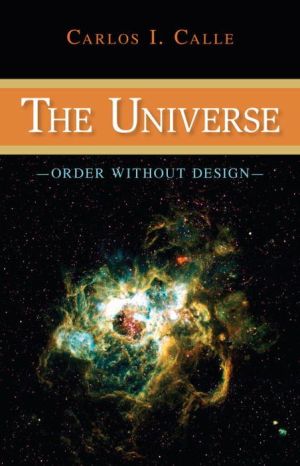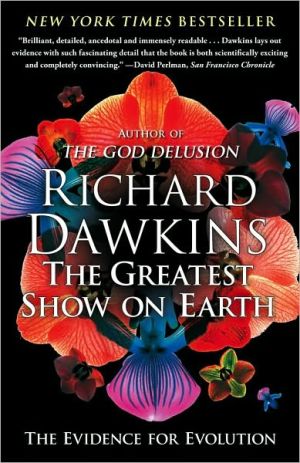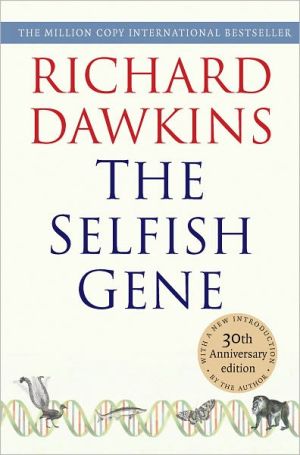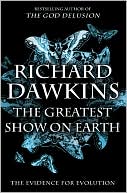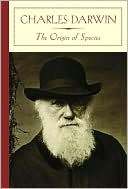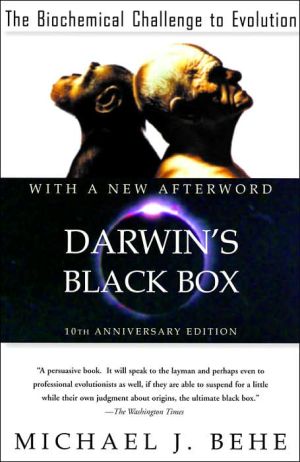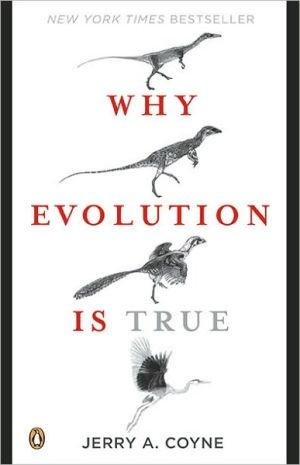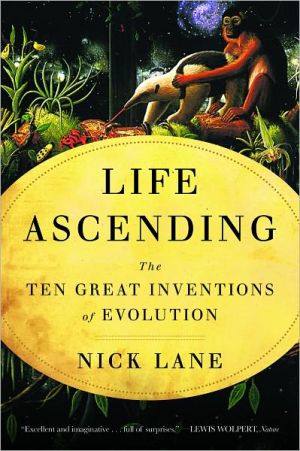The Universe: Order Without Design
Is the universe designed for life? Physicists have discovered that many seemingly unconnected phenomena, which took place millions of years apart, played a crucial role in the development of life on Earth. Does such evidence reveal a purpose behind the order of the universe?\ NASA senior research scientist Carlos I. Calle explores this tantalizing question and many more in this wide-ranging introduction to the very latest and sundry theories about the origins and evolution of the enormous...
Search in google:
Is the universe designed for life? Physicists have discovered that many seemingly unconnected phenomena, which took place millions of years apart, played a crucial role in the development of life on Earth. Does such evidence reveal a purpose behind the order of the universe?NASA senior research scientist Carlos I. Calle explores this tantalizing question and many more in this wide-ranging introduction to the very latest and sundry theories about the origins and evolution of the enormous cosmos. From the big bang to the possibility of a "big crunch" he renders the complexities of theoretical physics beautifully lucid for the lay reader.Calle begins by reviewing the milestones of 20th-century astrophysics: the confirmation of the big bang theory in the 1960s by the discovery of cosmic background radiation; the inflationary theory of universe expansion, which NASA observations have recently confirmed; the formulation of the essential laws of physics that govern the unfolding of all physical processes, from subatomic fluctuations to the formation of galaxies; and physicists' attempts to unify all the forces of nature.Now, at the start of the 21st century, questions have been raised about the origins of the laws of physics. Do they suggest a Grand Designer, or is their existence a natural outcome of some automatic process? Calle lays out the cosmological models based on M-theory, which suggests that our particular universe may be one of an unimaginable number of universes, each with its own set of physical laws. According to one of the most promising models, the big bang may not be the moment of creation but the bridge to a past filled with endless cycles of universecreation and destruction.Calle also provides an exciting look at Stephen Hawking's fascinating proposal that the universe had no origin-and that present-day observers may influence the very nature of reality. Did the universe require a prime mover-the Grand Designer-to create the planets, the stars, and the galaxies? The Universe-Order without Design will give you plenty of food for thought.
The Universe\ ORDER WITHOUT DESIGN \ \ By Carlos I. Calle \ Prometheus Books\ Copyright © 2009 Carlos I. Calle\ All right reserved.\ ISBN: 978-1-59102-714-0 \ \ \ Chapter One\ Designer Universe\ Photons from the Sun\ The light reaching your eyes after it is reflected by the light areas of the page that you're reading now originated a million years ago, deep in the interior of the sun, where the temperature reached 10 million degrees. Some 600,000 km (375,000 miles) beneath the gaseous, hot, bright surface that we see from our planet, the cores of two hydrogen atoms coalesced into the nucleus of a heavy form of hydrogen called deuterium. A few moments later, the newly formed deuterium nucleus collided with a third hydrogen nucleus to form helium. The second collision produced something else: a photon, a tiny bundle of light that immediately started on a long and fortuitous journey toward the sun's surface. Life wasn't easy for that photon. Countless times, atoms and electrons in the sun absorbed the photon only to regurgitate it almost immediately, not without taking away some of its energy. More times than you'd care to count, the photon got ejected in the wrong direction, losing most of the ground that it had gained in previous attempts.\ A million years after it started on its journey, the photon finally reaches the surface of the sun and sets out toward the Earth. Eightminutes later it is absorbed and reemitted by the molecules that make up the paper of this book. An instant later, the photon comes out and enters the cornea of your eye. As it did in the interior of the sun and while traveling through the Earth's atmosphere, the photon once again is absorbed and reemitted by the molecules in the cornea and the lens. The ciliary muscles that surround the lens relax, decreasing the radius of curvature, sending the photon through the vitreous, jelly-like body toward the paper-thin retina. There, the retinal, a compound derived from vitamin A, absorbs the photon, ending its million-year journey.\ The energy of the photon absorbed in the back of your eye alters the geometry of the retinal, and this change causes a series of molecular transformations that triggers an electric signal that is carried by the optic nerve toward your brain. When the electric signals from a few other photons that originated a million years ago in the depths of the sun follow the first one, your brain integrates these signals and begins to form the image of the words on this page.\ The actual processes both in the eye and in the core of the sun are much more complicated than described here. At first glance-a physicist's glance, but a glance nonetheless-the thermonuclear reactions that take place in the sun shouldn't happen. The hydrogen nuclei have positive electric charges (they are actually single protons) that repel each other with a force that becomes extremely large when they are brought close to each other. The two colliding hydrogen nuclei don't have enough energy to overcome this electrical repulsion, even when moving at extremely large speeds near the center of the sun. How do they do it? They actually tunnel through the electrical barrier. It is as if you were repeatedly bouncing a tennis ball against a wall with your racket, hitting the wall higher and higher, when suddenly, a few feet before the ball reaches the top, the ball goes through the solid wall and appears at the other side. According to quantum mechanics, that's exactly what happens to the colliding protons in the sun so that they can create the photons that eventually enable you to read this page.\ Your eye is able to detect about five consecutive photons in a relatively dark room. In the brighter room you're sitting in now, you are actually receiving millions of photons. But they have to be the right photons; they have to have the right energies or you wouldn't be able to see them. The photons that are created in the sun have way too much energy for your eye to detect them. If fact, they have so much energy that they would damage your eye. They are actually gamma rays, a type of radioactivity. It is through their very frequent collisions that they lose the exact amount of energy so that your eye can detect them. And it takes a million years of continuous collisions to achieve that.\ Was the Sun Designed for Life?\ The sun sends out photons with energies other than visible light. However, most of them are in the visible range of energies. What's more, the sun's photon output peaks in the yellow-green part of the spectrum, which happens to be where our eyes are most sensitive (Fig. 1-1).\ There seems to be a remarkable equilibrium between the complicated mechanism of light and energy production in the sun and human vision. But this is just one of the many equilibriums that exist between the sun and the Earth. The most important one is that the total energy output from the sun allows for the existence of abundant liquid water on the Earth, an essential ingredient for life.\ Is this equilibrium a coincidence or was it designed specifically for our existence?\ In the fourth century, Augustine asked a similar question. To him, the order, structure, and beauty of the world required a supreme designer. Thomas Aquinas in the thirteenth century came to the same conclusion. Perhaps the most extensive description of this "Argument for Design" was put forward in the eighteenth century by the English theologian William Paley in his popular book Natural Theology or Evidences for the Existence and Attributes of the Deity Collected from the Appearance of Nature. Paley imagined finding first a stone and then a watch while walking in a forest. If someone asked about the origin of the stone, he could easily say that it had been there forever. The watch, however, required that someone assembled it together and carefully adjusted it so that it would move with the precision needed to accurately show time. This complex piece of machinery, Paley thought, "must have had a maker, ... an artificer or artificers who formed it for the purpose which we find it actually to answer, who comprehended its construction and designed its use."\ The mechanism for the generation of visible light in the sun is more delicate and precise than any watch. But the sun hasn't always been this way. The sun has evolved and continues to evolve. The sun was born 5 billion years ago in a vast cloud of hydrogen gas when interparticle collisions generated a region of higher concentration of gas. This region separated into a large sphere, or protostar, which soon began to shrink because of its own gravity, causing the temperature to rise. Two hundred and fifty thousand years later, the temperature reached 10 million degrees, high enough for nuclear fusion to begin. At that moment, the sun was born. Fifty million years after the protostar was formed, the sun reached its maturity stage.\ During the sun's adult life, which lasts 10 billion years, most of its energy comes from the conversion of hydrogen into helium. During that time, the temperature increases steadily. Our sun is now middle-age, having lived 5 billion years, with another 5 billion years left before its nuclear fuel runs out in the core. When that happens, the core won't be able to hold its own weight and will start to contract. The contraction will heat up the core again and the sun will start radiating energy out. The outer layers will expand, turning the sun into a red giant. The Earth by then would long be deserted-which is a good thing, since the red giant sun will engulf it along with Venus and Mercury.\ The red giant phase of the sun will last for a few hundred million years, after which gravity will start to compress the core of the sun until it lights up once again as a white dwarf. This third phase in the life of the sun will last for a few million years. Its end will now be near, as the sun becomes a black dwarf with no fuel to burn-a dead star.\ The sun is the perfect star for life only during most of its adult years, when the temperature remains close to 6,000 kelvin (or 6,000 K). Life as we know it, and even life as we may be able to imagine it based on the properties of its possible constituents, is unlikely to be possible during the red giant or white dwarf phases. And it will certainly not be possible during the black dwarf phase.\ This complex watch, the delicate and precise mechanism of energy and light production in the sun, is crucial for our existence. Now, I'd like to tell you about another watch.\ Star Stuff\ The selenium, copper, and zinc in your body all come from massive stars that exploded over 5 billion years ago. As you might imagine, star explosions aren't an everyday event. Every forty years or so one such star explosion-a supernova-occurs in our galaxy, but most are hidden by interstellar dust. In fact, the last supernova seen in our galaxy was discovered by Kepler in 1604. But the universe has billions of galaxies, and in recent years, one supernova explosion took place in a nearby galaxy right before our eyes and telescopes.\ On February 24, 1987, astronomer Ian Shelton of the University of Toronto was taking photographs of the Large Magellanic Cloud with the telescope of Las Campanas Observatory in Chile. The Large Magellanic Cloud is a small satellite galaxy of our own Milky Way galaxy. The night that followed, he continued with his project of photographing the same region of space. After examining the new photographs and comparing them to the ones he'd taken twenty-five hours before, he noticed a new bright star on the new plates that wasn't on the earlier plates. The new star turned out to be the first supernova explosion observed since Kepler's (see Plate I).\ In New Zealand, amateur astronomer Albert Jones actually saw the explosion directly. One evening, just before clouds rolled in, Jones noted a "bright blue object" in the Large Magellanic Cloud. He was able to confirm the event later that evening when the sky cleared.\ Jones saw it in 1987, but the explosion actually took place 167,000 years ago, since the Large Magellanic Cloud is 167,000 light-years away. When you look at a red sun during a beautiful sunset, you're looking at the sun as it was 8 minutes ago, since that's how long light takes to get here from the sun. When you look at your friend across the table, you're looking at the way she was 3 nanoseconds ago because that's how long light takes to bounce off her and reach your eyes. Of course, your friend doesn't change that much in 3 nanoseconds and when you look at her, that's the way she is now. The sun doesn't change that much in 8 minutes, either, so the sun in the sunset is still there and hasn't exploded. But Sanduleak, the large star that exploded in the Large Magellanic Cloud, 167,000 light-years away, does. And did. When Kepler saw his supernova in 1604, Sanduleak had already exploded, but he didn't know it. He couldn't have known because the light from that explosion hadn't reached us yet. Once it reached us, it shone as bright as the stars in the Big Dipper, releasing at once the same amount of energy as one hundred suns would generate in their entire lifetimes.\ The sun can't explode into a supernova. It's not big enough for that. You need stars larger than about eight suns to have supernovas. The best ones are as large as twenty-five suns. As a star burns its fuel, it generates heavier elements in its core. A massive star can generate elements from helium to iron so that when all of its fuel is used up, it ends up with a core the size of the Earth and made solely of iron. When energy production halts, there is no outward radiation to counteract the force of gravity so the star collapses quickly, taking one second to squeeze the core into a small sphere 100 km (60 miles) across!\ The collapse increases the temperature of the core, providing enough energy for the production of elements heavier than iron. The core collapse eventually stops and the material rebounds outward, crashing into the plunging outer layers and forming a shock wave. The explosion takes a few tens of milliseconds, sending most of the matter that made up the star into space, including the selenium, copper, zinc, and all the newly made heavy elements that make up the Earth and part of our bodies.\ We've found a more complex and delicate watch. The heavy elements that our bodies need are made in the last moments in the life of a massive star, during the complicated series of events that culminate in its destruction. And it is this destruction that makes possible our existence.\ Other Watches\ There are more watches to be found in nature, some of which we'll be exploring. There are complex mechanisms in place that make the existence of life on Earth possible. There seems to be a fragile equilibrium between a complex process in the distant past and our own existence. If the mechanism had been slightly different, we wouldn't be here.\ It can be argued that our first watch may not be that unique. Stars come in many varieties and their core temperatures can be very different (see Plate II). Although all stars use the same mechanism of conversion of hydrogen into helium that generates the photons that the sun emits, a star with a much higher temperature will release many more of these photons, producing more energy than we would need and would make the Earth too hot for life to exist. Other stars may produce too few photons and may be too cold for life. But there are enough sunlike stars in our galaxy alone where a rocky planet similar to our Earth and orbiting at about the same distance could have the right conditions for life to appear, evolve, and survive.\ However, there is one watch that can't be explained with this argument. Recent discoveries are showing that a quantity that Einstein introduced into his equations of general relativity-which he called the cosmological constant-has a value so perfectly fine-tuned for the emergence of life in the universe that the tiniest deviation from it would destroy the delicate balance that allows life to exist. This really is the biggest watch of all.\ The reader might have noticed that my watches have all been physics watches, that I didn't bring up any biological watches at all, even though those were what Paley had in mind when he wrote his popular book. One reason for this is that I am a physicist, not a biologist. But the main reason is that, other than the origin of life itself, all of biology has been successfully explained. Biology has a magnificent theory: Darwin's theory of evolution. And all of biology can be explained with it. Biology has a designer, a watchmaker, but it is a blind watchmaker, a mindless watchmaker without a purpose. Biology's watchmaker is natural selection. Richard Dawkins's wonderful book, The Blind Watchmaker explains it clearly and authoritatively.\ Although biology deals with what may be the most complex systems in the universe, physics concerns itself with the ultimate questions of existence: How is the universe made? How does it work? Did it have a beginning and if so how did it start? Equally important: Was the universe designed for life?\ Biology can be explained through natural selection. The universe can be explained with the laws of physics, its watchmaker. But unlike natural selection, the theory that would explain the universe and how the laws of physics came about is still in development.\ Models of the Universe\ The path toward a theory of the universe started almost a hundred years ago with Einstein. After completing his masterpiece, the general theory of relativity-a theory of gravity that replaced Newton's own masterpiece-Einstein decided to apply it to the universe as a whole. Einstein used his field equation of general relativity to build the first model of the universe. The universe that he eventually came up with was static and, in that aspect, it fit well with the observational evidence of the time. However, Einstein's original model didn't really predict a static universe. It predicted a dynamic universe that was changing in time, either expanding or contracting. At the time, scientists thought that the universe was more or less constant in time. To them, the universe could have existed forever, although there were problems understanding how stars could continuously emit energy for an infinite time. Because if they did, the entire universe would be as hot as the interior of the stars. Still, Einstein decided to make his model fit the observations of a static universe and to that effect added a "cosmological term" to his equations. This term added a repulsive force that exactly counterbalanced gravity and forced the model to represent a static universe.\ (Continues...)\ \ \ \ \ Excerpted from The Universe by Carlos I. Calle Copyright © 2009 by Carlos I. Calle. Excerpted by permission.\ All rights reserved. No part of this excerpt may be reproduced or reprinted without permission in writing from the publisher.\ Excerpts are provided by Dial-A-Book Inc. solely for the personal use of visitors to this web site. \ \
Contents Preface....................111. Designer Universe....................13Photons from the Sun....................13Was the Sun Designed for Life?....................15Star Stuff....................17Other Watches....................19Models of the Universe....................20Newer Models of the Universe....................21The Problem of Origins....................22What about God?....................242. Building a Theory of the Universe....................29Explaining the Universe....................29A Rational View....................31An Irrational View....................33It's Only a Theory....................35Experimenting....................37Newton's Clockwork Universe....................38Einstein's Universe....................42A New View of Space and Time....................44A More General Relativity....................47Warping Spacetime....................51Einstein's System of the World....................533. In the Beginning....................57The Geometry of the Universe....................57Reinventing Friedmann's Model....................60The Expansion of the Universe....................62Making the Stuff of Matter....................65Echo of the Big Bang....................71The Cosmic Background Explorer....................744. How to Make a Universe....................79Three Unexplained Problems....................79Breaking the Symmetry....................83The Inflationary Universe....................87The New Inflationary Universe....................92The Fingerprint of the EarlyUniverse....................95"From Speculation to Precision Science"....................98Making the Universe....................1005. The Watchmaker....................103The Laws of Physics....................103The Quantum Rules....................105Feeling the Force....................111The Building Blocks of Matter....................112Symmetry....................115The Higgs Mechanism....................118The Electroweak Unification....................121The Color Gauge Symmetry....................123The Standard Model....................125Grand Unification....................126The Watchmaker....................1286. Is God in the Details?....................131The Hierarchy Problem....................131Supersymmetry....................134Pulling Strings....................136M-Theory....................146The Work Is Not Done....................149Are the Laws of Physics Fine-Tuned for Life?....................150The Cosmological Constant....................153Is God in the Details?....................1567. A Landscape of Pocket Universes....................159Fragile Equilibrium....................159Multiple Universes....................160Do Other Universes Exist?....................164Explaining the Fine-Tuning....................172Cosmological Natural Selection....................1758. Eternally Oscillating Universes....................181A Very Brief History of Time....................181Brane World....................184The Universe Next Door....................186The Cyclic Model....................190Eternal Oscillation....................194The Cyclic Model versus Eternal Inflation....................1969. A Universe without Origin....................203The Problem of Origins....................203The Road to Quantum Gravity....................204Loop Quantum Gravity....................205The Holographic Principle....................207"Creation of Universes from Nothing"....................214A Universe with No Boundaries....................217Parallel Universes....................22210. The Self-Selecting Universe....................229The No Boundary Proposal....................229Delayed Choice Experiment....................230A Top-Down Approach to Cosmology....................234Explaining the Fine-Tuning....................236An Inflationary No Boundary Universe....................238The Observer-Selected Universe....................239A Self-Organizing Universe....................24111. Order without Design....................245Predicting the Early Universe....................245The Origin of Complexity....................247The Problem of Origins One More Time....................249A Universe without a Designer....................253Notes....................257Powers of Ten....................273The Fundamental Constants of Nature....................275Big And Small Numbers....................277Glossary....................279Further Reading....................287Index....................289
